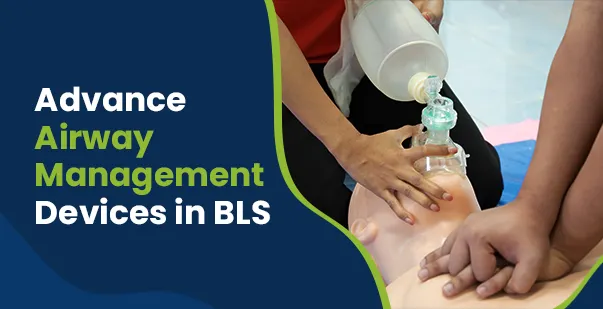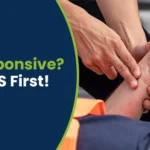Table of Contents
- Introduction
- An Overview of BLS Training
- What is an Advanced Airway Device?
- Benefits of Advance Airway Devices
- BLS Training for Advanced Airway Devices
Introduction
Advanced airway management is the analysis, planning, and series of medical procedures to maintain or restore a person’s ventilation or breathing. It enables air to flow from the nose and mouth into the lungs. Advanced airway management is a key skill that you learn as part of the basic life support (BLS) certification. The training course involves learning to use advanced airway devices like endotracheal tubes, supraglottic airways, and bag-valve masks properly during emergencies. Let’s learn more about advanced airway devices and their usage in BLS training below.
Master BLS Now
Get BLS certified with confidence
An Overview of BLS Training
Basic Life Support (BLS) is the type of care that healthcare providers, first responders, and public safety professionals provide to patients experiencing cardiac arrest, respiratory distress, or an obstructed airway. It specifically requires knowledge and skills in cardiopulmonary resuscitation (CPR), using automated external defibrillators (AEDs), and other ways of relieving airway obstructions in patients of every age.
BLS training uses a scenario-based approach to help you develop various first aid and problem-solving skills that drive better patient outcomes. The course specifically covers advanced and basic airway management in children, infants, and adults. This involves learning how to clear obstructed airways through various equipment. You can easily gain proficiency in recognizing and responding to different types of airway obstructions and improving emergency response effectiveness through these training certifications.
Read More: What Are the Signs of Severe Airway Obstruction in BLS
Types of Advanced Airway Devices
An advanced airway device is a specialized medical device that helps create and maintain a clear airway in a patient. This equipment is beneficial in emergencies because it provides a direct pathway to the lungs for controlled ventilation and oxygen delivery.
Advanced airway devices fall into five broad categories, each with different features and usage.
Supraglottic Airway Management Devices
Supraglottic airway devices help open the victim’s upper airway to allow unobstructed ventilation. Research from the National Library of Medicine shows that this equipment successfully provides rescue ventilation in over 90% of patients.
These tools are designed specifically for oxygenation and the administration of anesthetic gases. They can be used in situations such as respiratory arrest or surgical procedures under general anesthesia.
Oropharyngeal Airway Device
Oropharyngeal airway equipment is a curved device inserted through a patient’s mouth. It prevents the victim’s tongue from covering the epiglottis, a small, leaf-shaped sheet of elastic cartilage that protects your larynx (voice box) and helps you swallow.
You can use these advanced airway devices on deeply unresponsive patients. Please note that you cannot use the equipment on responsive patients because it can cause vomiting and aspiration by stimulating the gag reflex.
Nasopharyngeal (NPA)
Nasopharyngeal airway devices are plastic hollow or soft rubber tubes passed through the nose into the posterior pharynx or the back wall of the throat. NPAs are more tolerable than oropharyngeal airways. They are preferred in emergency and clinical settings because they help maintain an open airway in semi-conscious or unconscious patients while minimizing the risk of gag reflex stimulation.
However, you cannot use these airway intubation devices on suspected fractures to the base of the skull due to the risk of intracranial insertion. Using this device may lead to the tube entering the cranium or the bones that form the head.
Infraglottic Airway Management Devices
Infraglottic devices create a conduit between the mouth, passing through the glottis and then into the trachea. The equipment leverages infraglottic methods that secure the airway and ensure proper ventilation. The selection of these techniques depends on the accessibility of medical equipment, the expertise of the surgeon, and the type of disease.
Laryngoscopes
Laryngoscopes are advanced airway devices that allow the view of the larynx, a tube-shaped organ in the neck. They help see through the larynx, either directly or indirectly.
Direct laryngoscopy devices usually establish a direct line of sight between the practitioner’s eye and the larynx. Their primary properties include typical handle and blade assemblies, which enable visualization of the vocal cords and surrounding structures.
Conversely, indirect laryngoscopes use fiber optic technology or cameras to view the larynx. Video laryngoscopes or optical styles are an inevitable part of these devices. Indirect laryngoscopes usually provide a 360-degree view of the larynx by moving the point of view downwards after securing the endotracheal tube.
Benefits of Advance Airway Devices
According to the report by MarketsandMarkets, the global airway management devices market, valued at $1.8 billion in 2022, is projected to grow at a CAGR of 5.6%, reaching $2.4 billion by 2028. It means the demand has increased for more effective advanced airway devices. Their benefits include:
Improved Ventilation
Advanced airway devices, such as supraglottic devices, ensure efficient airflow into the lungs. These devices are specifically for patients who cannot maintain their airways. This leads to a sufficient supply of oxygen to the body, improving a person’s rate of survival.
Higher Success Rate
Advanced airway devices increase the chances of successfully securing an airway, especially in difficult cases. This equipment is the perfect alternative to mask ventilation or endotracheal intubation, among other traditional methods. Devices like video laryngoscopes and supraglottic airways help improve the success rate in several emergency care situations.
Enhanced Patient Safety
Advanced devices reduce the risk of serious complications, such as food or fluid aspiration or inhalation into the lungs, hypoxia, or a lack of oxygen. These devices help ensure proper airway patency and oxygenation, which is the key to patient safety during anesthesia or emergencies.
Faster Response Time
These airway intubation devices streamline the process of securing an airway, which is the key to helping victims in emergencies where every second counts. These advanced devices allow quicker intubation or ventilation, which minimizes the time a patient is deprived of oxygen.
Ease of Use
Many advanced airway devices are designed with user-friendly features, such as intuitive, easy-to-insert supraglottic devices or clear visualization through video laryngoscopes. This ease of use reduces the likelihood of errors, particularly in time-sensitive or high-stress situations.
Versatility
Advanced airway devices can be used in multiple settings, such as pre-hospital environments, emergency rooms, and intensive care units. They are adaptable to both adult and pediatric patients, making them key tools for healthcare providers across various medical disciplines.
Reduced Risk of Trauma
Advanced devices are designed to be less invasive and cause less trauma to the airway than traditional methods. For instance, video laryngoscopes provide better visualization, allowing practitioners to perform intubation with minimal force. This helps reduce the risk of injury to the patient’s airway.
Support in Difficult Airway Scenarios
Advanced airway devices offer viable alternatives to traditional intubation in patients with abnormal anatomy or severe injury. These devices help secure the airway in complex cases where mask ventilation and tracheal intubation may not be possible.
Increased Patient Comfort
Certain advanced airway devices, such as supraglottic airways, are less invasive than endotracheal tubes. They can also provide more comfort to patients during airway management. This is specifically for patients who want prolonged ventilation or those in non-emergency situations.
Read More: How To Find & Check Your BLS Certification Status?
BLS Training for Advanced Airway Devices
BLS training is the key to learning the relevant skills to save lives in emergencies. You must know how to provide CPR or use an AED in case of medical situations like cardiac arrest. You will also learn how to leverage advanced airway devices to maintain or restore a patient’s airway. This helps ensure correct ventilation and oxygenation inside the human body. Make sure to pursue the BLS certification course from a recognized institution to ensure you can showcase your credibility to potential employers.
References
- https://www.osmosis.org/answers/airway-management
- https://www.cascadetraining.com/resources/blog.cfm?id=266&advanced-airway-management-in-acls-mastering-techniques-and-best-practices
- https://blog.sscor.com/basic-vs.-advanced-airway-management
- https://www.researchdive.com/blog/types-of-advanced-airways-management-devices







